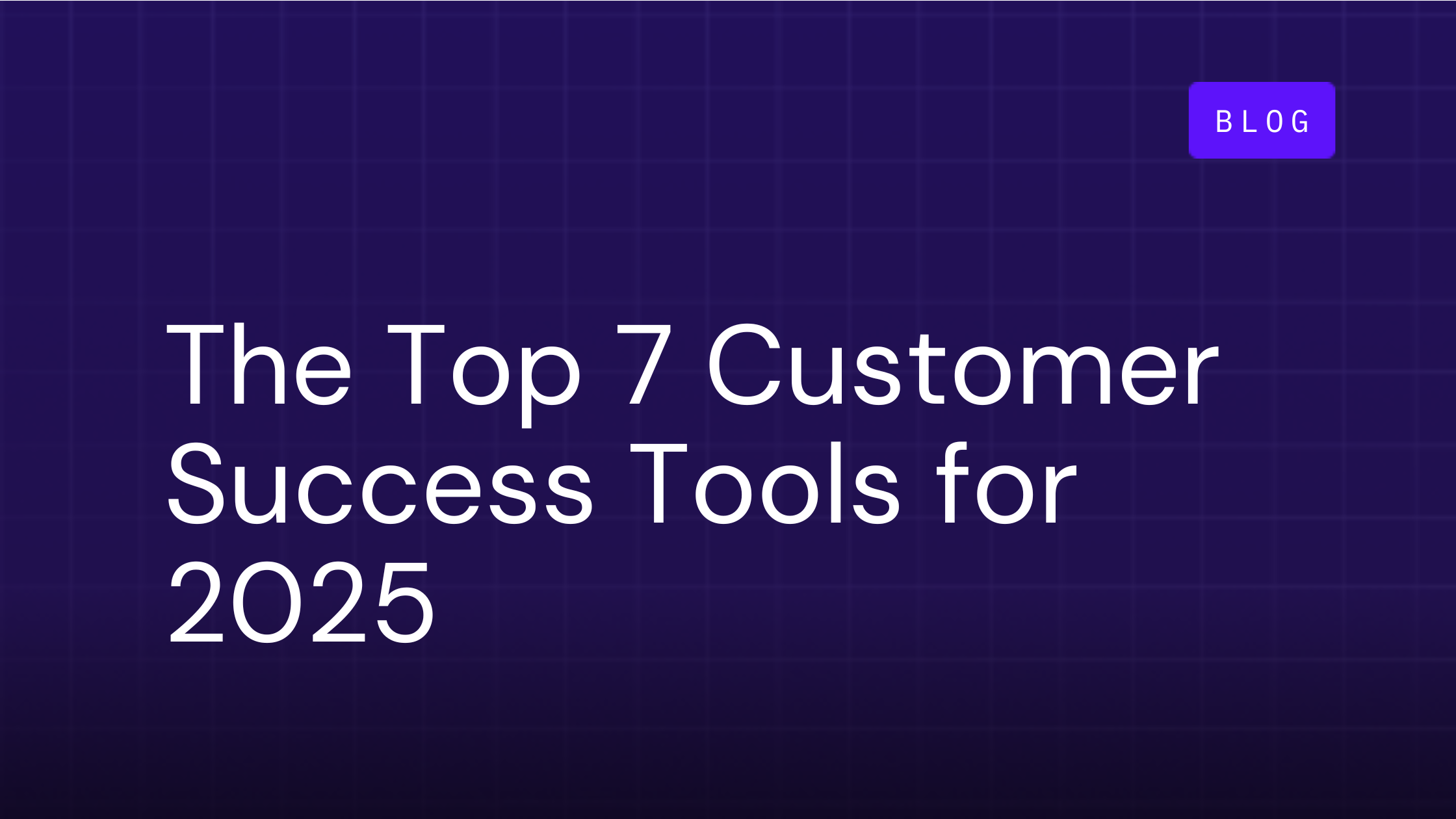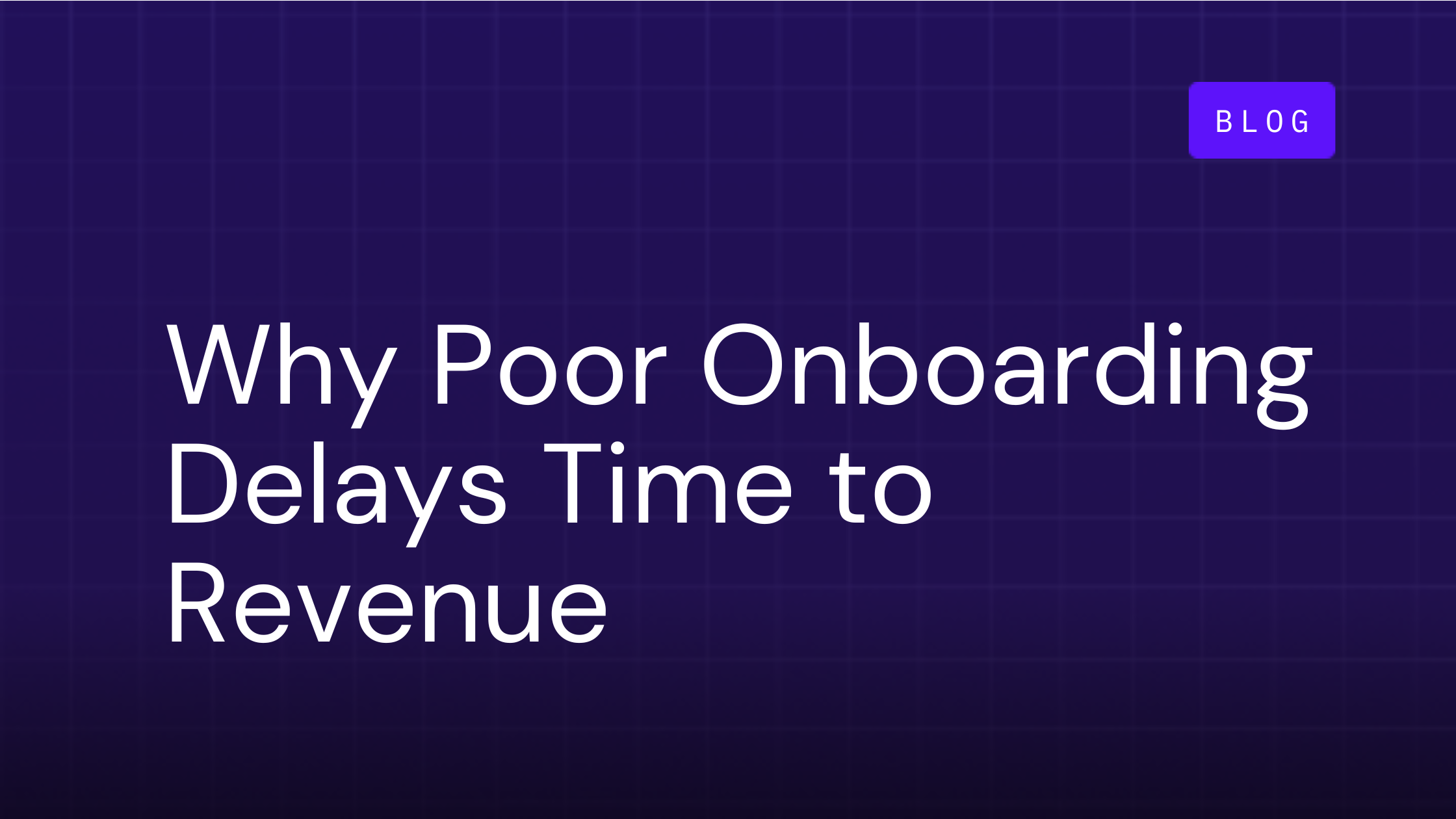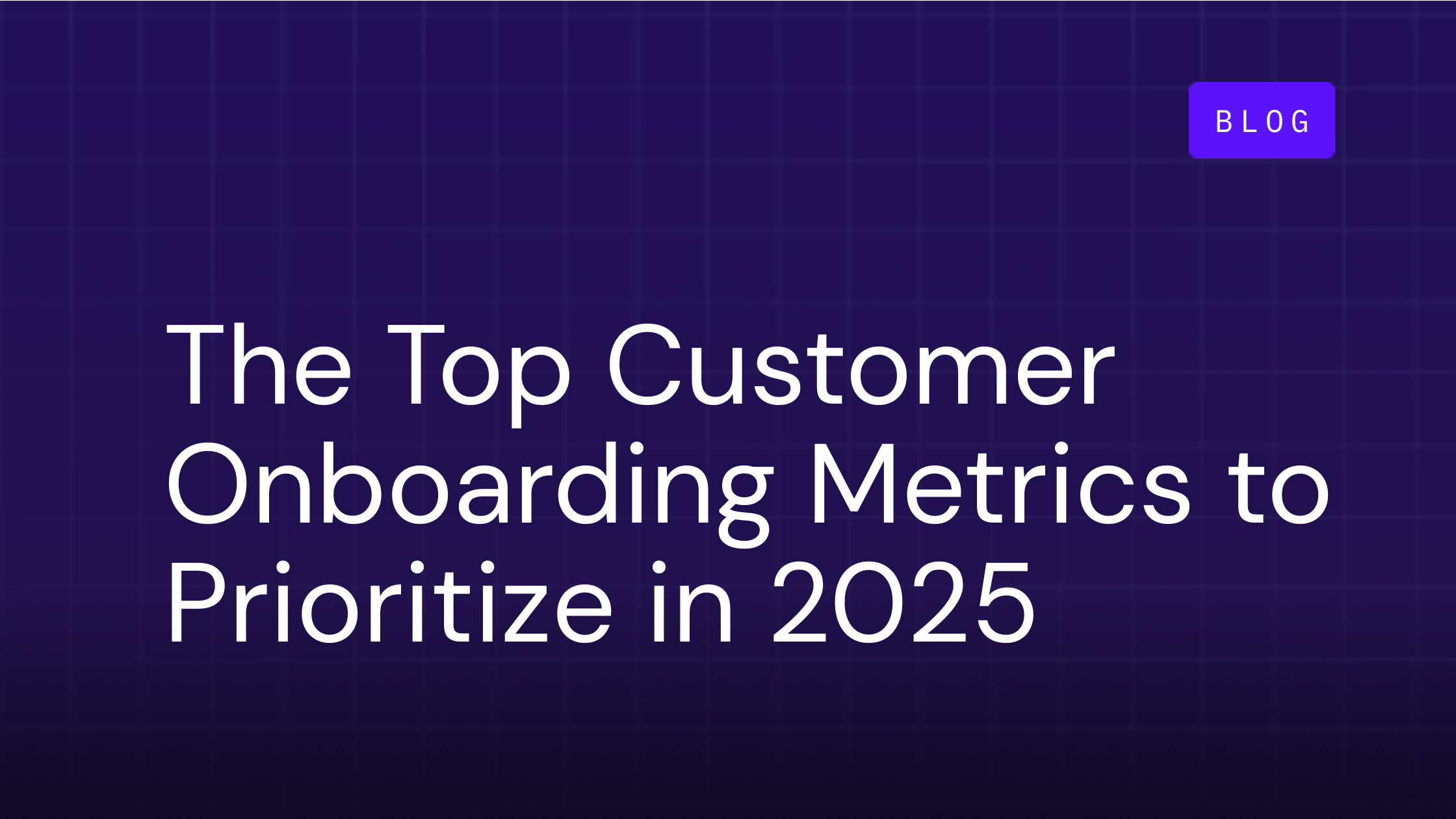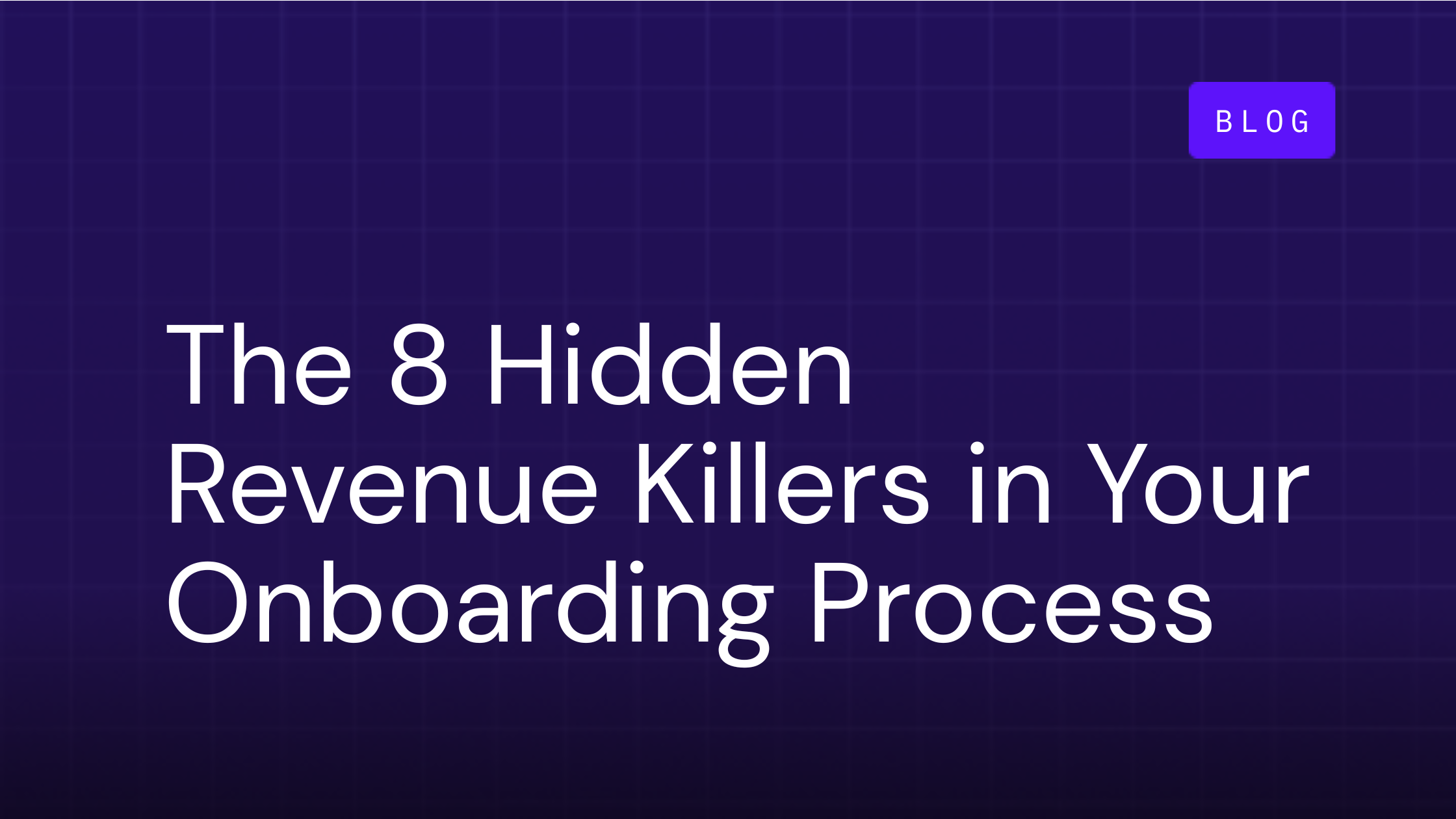The Top 7 Customer Success Tools for 2025
Published: May 30, 2024

Table of Contents
Customer success tools help companies manage the customer experience — from pre-sales to renewals. Admins or CS leaders typically manage them, but your entire team benefits from implementing customer success platforms.
That being said, it’s not always clear which customer success software your team actually requires. There are so many options to choose from and plenty of overlap between competing platforms. So how do you get the tools you need to support your customers without overpaying for unnecessary capabilities?
The answer lies in reviewing the top categories of customer success management software. Doing so will help you understand which types of tools you need to achieve your goals. You can then drill down into specific products and make more informed purchasing decisions.
What Is Customer Success Software?
Customer success software helps companies manage and improve their customer journeys. These platforms collect data and perform automated analytics to show businesses their strengths and weaknesses across client-centric metrics. They also support companies by:
- Making CS teams more efficient with automated workflows
- Guiding customers through the onboarding experience
- Providing a more direct way to communicate with new clients
- Sharing product knowledge
- Curating personalized new user experiences
Benefits of Customer Success Software for SaaS
Customer success software offers many benefits that make it a great fit for medium and large companies. But these four may be the most impactful.
Improved Customer Experience
Customer success software will improve customers’ experience. It does so by giving your team more options for personalization during onboarding and access to better data for decision-making. It will also become easier to manage your customer experience with everything you need to do so available centrally.
It’s also worth considering how customer success software compares with the alternatives. For example, spreadsheets and email threads can actively harm the customer experience by making it more difficult to learn about your products.
CS software eliminates that risk from your onboarding workflow. It keeps everything simple so old technologies can no longer impact your customer retention rates.
Save Time
Customer success tools use workflow automation and artificial intelligence to automate many of the processes you may perform manually today. These features can save time for your marketing, sales, and onboarding teams. Those employees will suddenly have more hours available to make positive impacts on your company.
Managers can also save time by investing in a CS platform. You’ll just have to look at a single dashboard to get all of the information you need about customer experience. Many products also have in-app communication options you can use to easily communicate with your teams.
Engage Customers
Data shows customers who are engaged by a brand make purchases 90% more often. CS software can help you keep your customers and leads engaged, which means it may increase revenue.
These products drive engagement by bringing personalization to the new client experience. Tools such as OnRamp can help you make a perfect first impression and build client relationships that last from day one.
Improve Retention
Research shows 63% of customers think onboarding is key when deciding whether to subscribe to a product. If you deliver a bad onboarding experience, that sets the stage for a poor relationship with a customer. This often ends with the client looking elsewhere to meet their needs.
CS platforms improve retention by helping you knock your onboarding process out of the park. Many also offer an ongoing way to keep clients engaged. Features such as these can help you hang onto more of the customers you get.
Types of Customer Success Software
Customer success tools can all sound like roughly the same thing. But there are important distinctions between platforms you should know about. You’ll find these categories below, along with a few examples of actual products for each.
Customer Success Platforms
Customer success platforms (CSPs) help businesses manage their relationships with new clients after making sales. They often centralize data from sources such as your CRM, support tickets, and customer feedback system.
This creates a comprehensive view of every client, which businesses can use to consider the best way to approach each relationship. Through that process, CSPs help companies reduce churn and improve client satisfaction. They can be great for your bottom line.
Some of the most popular CSPs include:
- Zendesk (offers a free 14-day trial)
- Gainsight (no trial)
- UserIQ (no trial)
- Catalyst
Customer Onboarding Tools
Customer onboarding tools often share features with CSPs. But they focus primarily on guiding users through your onboarding journey. This can be extremely valuable, as some research indicates over 50% of customer churn can be attributed to a poor onboarding experience.
The main goal of customer onboarding software is to teach new clients how to use your products as fast and painlessly as possible. This helps them get maximum value from your product sooner, which tends to increase user satisfaction.
You’ll fill your onboarding tool with written explainers and video guides, which users will access on-demand. As customers go through your learning journey, they’ll create data, which the platform tracks. You can use this to identify and fix onboarding problems faster.
You can also use customer onboarding data to automatically create different segments of new clients. Then, you can change how you approach onboarding for each group. This brings a level of personalization to your new client experience that will help your company stand out.
OnRamp is a leading customer onboarding tool with all of these capabilities and more. It can help you speed up your onboarding process, reduce costs, and keep customers more engaged. Plus, you’ll get access to all of the tools you need to build whatever unique new client experience is best for your clients.
Project Management Tools
There are many different ways to improve customer happiness. Some involve giving new clients access to better onboarding materials. Others focus on making your internal team more effective. Project management tools belong to this second category. They support customer success by helping internal teams manage their activities more efficiently. These can include:
- Delegating tasks
- Gathering data and performing analytics
- Simplifying cross-departmental coordination
- Integrating with other internal tools to save steps
When your team is more effective, customers tend to be happier with your company. Practically, using project management software could lead to reduced wait times for support, faster incorporation of customer feedback, and other worthwhile benefits. Some of the most popular project management tools on the market today include:
- Asana
- Trello
- Basecamp
- Wrike
Customer Churn Platforms
Unhappy customers tend to become ex-clients. Customer churn platforms give companies tools they can use to avoid that fate. They include features such as:
- Customer churn predictions so you can see who you’re at risk of losing
- Deep insights into why users leave
- Tools for addressing churn at each stage of the customer journey
- Machine learning to help you make more informed predictions based on historical data
If your company is struggling with churn, one of these platforms can help you figure out why. Some popular software options include Qualtrics, Zendesk, and Gainsight. Note the overlap of Zendesk and Gainsight. Although primarily customer success platforms, they also include features to help you deal with churn.
Customer Advocacy Tools
The previous tools on this list help your company improve customer satisfaction and retention. Once you’ve done that, the next step will be turning those happy clients into brand promoters. Customer advocacy tools help you do that with features such as:
- Pre-built templates for referral programs
- Simplified incentive programs
- Reward systems for online reviewers
- Integrations with other systems to centralize your data
Getting this type of support from your customers can be extremely valuable. Researchers say 92% of people trust recommendations from peers and 70% trust recommendations from people they don’t even know. There are also stats showing that referred customers are more loyal and spend more than the average client.
The best advocacy tools for you will depend on your goals. For example, ReferralCandy is a popular choice for companies building their referral programs. But NiceJob would be a better fit if you’re trying to get more online reviews.
Sales Tools for Renewals
There are also various sales tools available to help your company secure renewals when the time comes. CRMs are great for this because they store all customer data in a centralized spot. You can use this data to figure out how to approach clients in more effective, personalized ways.
Some of the most popular CRMs include:
- HubSpot
- Salesforce
- Monday
- Zendesk
Other Useful Onboarding Tools
Finally, it’s important to remember that there are a variety of tools that can be very helpful in the onboarding process that don’t necessarily fit into the onboarding categories. For example, teams often use calendar apps to stay on the same page for client interactions. Some even use YouTube to quickly share product demonstration videos.
Tools such as these are often free or more affordable than dedicated customer onboarding software. It’s worth considering which of your company’s needs can be met with these products because they could help you save some money.
Just note that many of the products on this list have the relevant features integrated into them. For example, OnRamp makes it easy to upload video explanations in your onboarding workflow. So if you’re going to buy customer success software anyway, you may want to keep all of your resources together.
How To Choose the Right Customer Success Tool
Choosing the best CS tools for your company can be challenging. This four-step process will help you make the right decisions.
1. Consider Your Goals
First, ask what you hope to achieve with new CS software. Do you want to fix your onboarding process? Or are you hoping to build a more effective loyalty program? The answer will direct your search.
If you aren’t 100% clear about your goals, consult with your team and review data. Employees can help you understand which features will have the greatest practical benefits. Your customer data can reveal where your biggest opportunities for improvement lie.
2. Choose Product Categories
Once you know your goals, you should have a better sense of the kinds of CS tools that are right for your company. These tools include:
- Customer success platforms
- Customer onboarding tools
- Project management tools
- Customer churn platforms
- Customer advocacy tools
- Sales tools for renewals
You might have goals that require more than one CS tool. For example, maybe you want to get better at closing on renewals while also reducing customer churn. If so, pay attention to feature overlap. You don’t want to pay for the same capabilities twice.
3. Read Online Product Reviews
Now you’re ready to zero in on specific CS tools such as OnRamp and Zendesk. The question is which of these tools is the right fit for your company and its needs. Online product reviews can help you make that decision.
They typically contain detailed looks at a product’s features, pricing, and user interface. You’ll also get to read about firsthand experiences people have had with the products. YouTube videos may even give you a visual of the platforms you’re considering, which can help you narrow down your options further.
4. Try Demos and Free Trials
Next, take advantage of demos and free trials. These give you the chance to engage with the products you’re shopping for directly, which can be an invaluable aid in your decision-making process. All that’s left to do after this is make your decision based on all of the information you’ve gathered.
Customer Success Tools FAQs
Why do you need customer success software?
Customer success software helps companies keep clients happy, which is good for loyalty, revenue, and churn. Different types of CS software support this goal in various ways — from the onboarding process to sales renewals.
What should you look for in a customer success tool?
You should look for customer success tool features that align with your organization’s goals. If you want to reduce churn during onboarding, choose a customer onboarding platform. If you’re more focused on getting more online reviews, customer advocacy software could be a better fit.
Is a customer success tool the same as a CRM?
A customer relationship management (CRM) tool like Hubspot or Salesforce are internal tools for managing prospect and customer data. A CRM is different from a customer success tool or a customer onboarding tool. A CRM is a type of customer success tool that focuses on managing client data. There are also customer success platforms designed for different purposes, such as reducing churn, managing internal projects, and simplifying the onboarding experience.
Related Posts:

Why Poor Onboarding Delays Time to Revenue in Consumption-Based SaaS
In consumption-based SaaS models, onboarding isn’t just a box to check. It’s the fuse that ignites the revenue engine. Until your...

The Top Customer Onboarding Metrics to Prioritize in 2025
Offering exceptional customer onboarding gives your company a competitive advantage that yields results in the long-term. It's...

The 8 Hidden Revenue Killers in Your Onboarding Process
Revenue loss doesn’t just happen when a customer churns. Revenue is at risk the moment a customer signs a contract and onboarding...